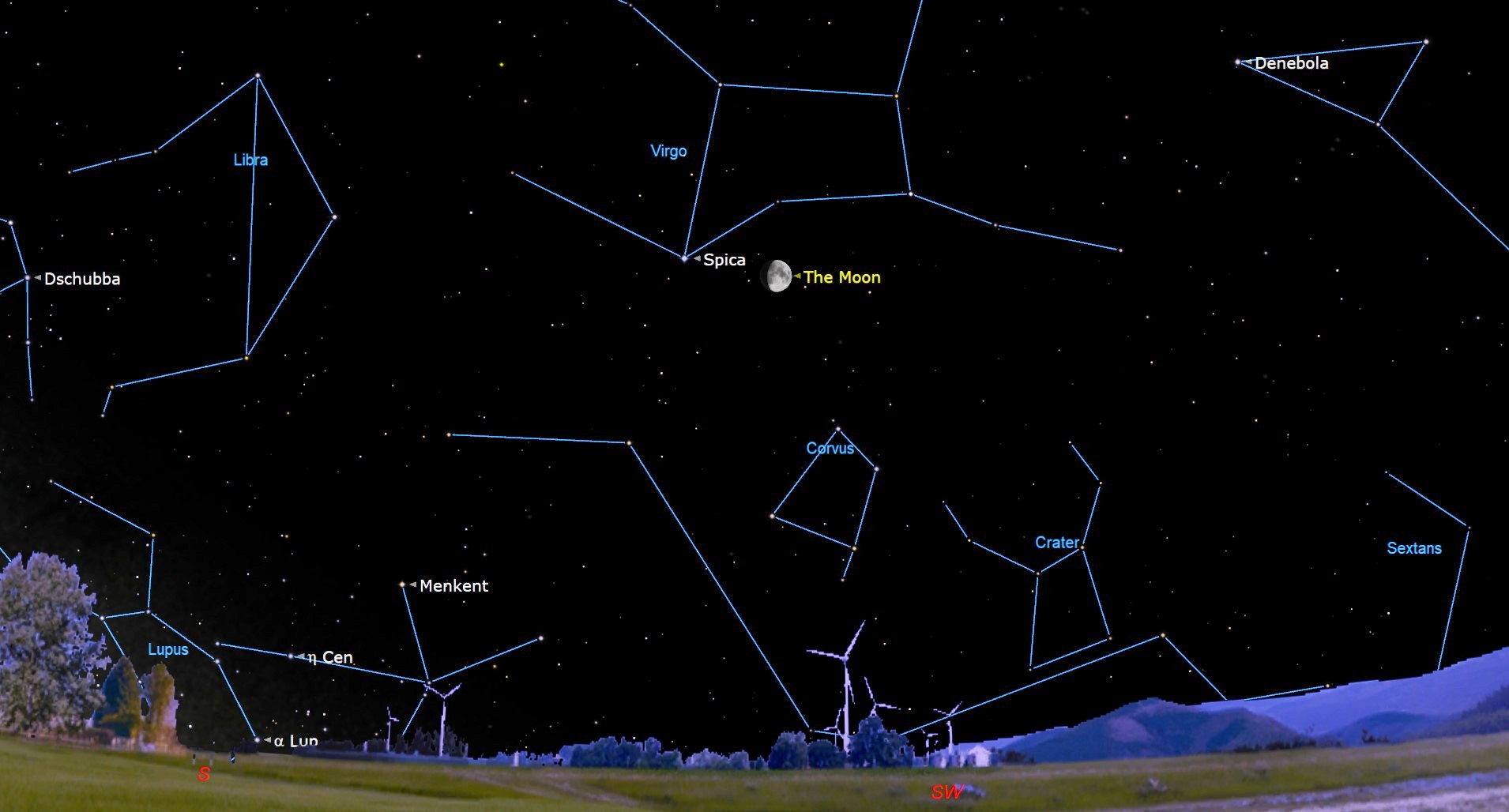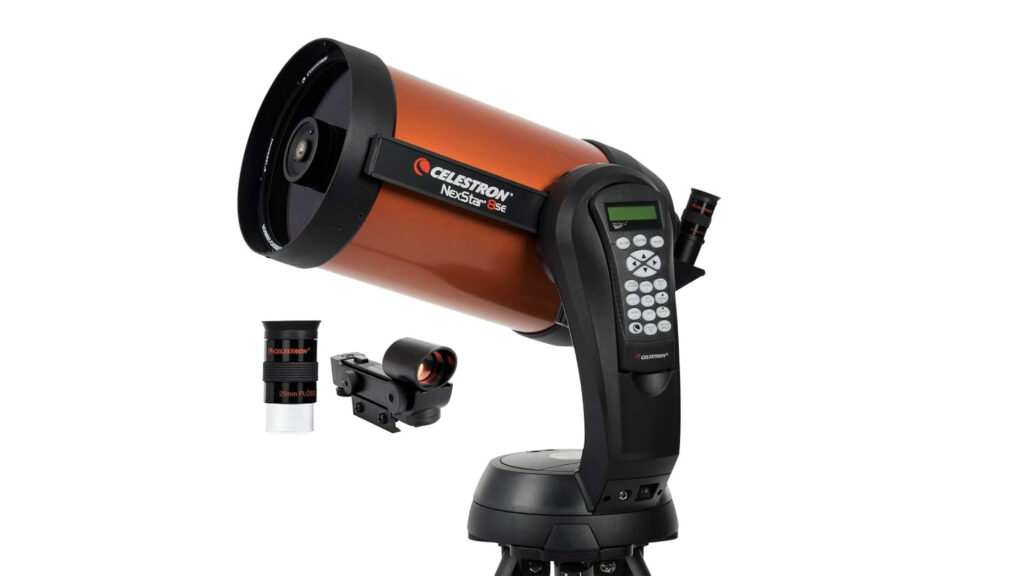Now Reading: Don’t miss Spica shine with the waxing gibbous moon tonight
-
01
Don’t miss Spica shine with the waxing gibbous moon tonight
Don’t miss Spica shine with the waxing gibbous moon tonight


The waxing gibbous moon will shine close to the bright star Spica in the night sky tonight, ahead of its full moon phase on June 11.
Skywatchers in the U.S. will find the moon above the southwestern horizon an hour after sunset on June 5, with Spica twinkling a little over seven degrees to the left of the lunar disk. Remember, you can estimate distances in the night sky by holding an outstretched hand — or fist — in front of you. The width of your clenched first from your thumb to the other side of your hand is about 10 degrees, while the thickness of your little finger accounts for around 1 degree in the night sky.
The red giant star Arcturus can also be found shining high above the moon close to the zenith (the point in the sky directly above an observer) on the night of June 5, while Mars will be visible in the west as a red point of light close to the kingly star Regulus, in the constellation Leo.
The moon will be seen to close in on Spica throughout the night, with the duo eventually setting in close proximity on the western horizon in the pre-dawn hours of June 6. A small number of stargazers in the southern hemisphere may even witness the moon pass directly in front of Spica, blocking its light.
This rare event — known as an occultation — will be visible to a handful of southern hemisphere countries and regions including Antarctica, Tasmania and the McDonald Islands in the hours following 8.23 a.m. ET (1223 GMT) on June 6, according to in-the-sky.org.
TOP TELESCOPE PICK:

Want to see the planets of our solar system for yourself? The Celestron NexStar 4SE is ideal for beginners wanting quality, reliable and quick views of celestial objects. For a more in-depth look at our Celestron NexStar 4SE review.
Spica is one of the brightest stars in the night sky, and can be found about 250 light-years away from Earth in the Virgo constellation. Spica is actually not one star but two, what is known as a binary system. These two stars, known together as Alpha Virginis, orbit closely around one another, making a full orbit every four days. The two stars of Alpha Virginis are only around 11 million miles (less than 18 million kilometers) away from each other and appear as a single point of light in the sky.
In addition, these two stars orbit so closely together that the gravity of each star pulls on the other, making them egg-shaped. The combined light from the two stars of Spica is around 12,000 times more luminous than the light from our sun, on average. They are both also larger than the sun, with diameters estimated to be approximately 7.8 and 4 times greater than the sun’s.
Stargazers looking to explore the wonders of the night sky for themselves should check out our guides to the best telescope and binocular deals available in 2025. Photographers seeking to upgrade their gear ahead of June’s full ‘Strawberry Moon‘ should also read up on our guides detailing the best cameras and lenses for astrophotography.
Editor’s Note: If you capture an image of the night sky and want to share it with Space.com’s readers, then please send your photo(s), comments, name and location to spacephotos@space.com.
Stay Informed With the Latest & Most Important News
Previous Post
Next Post
-
 012024 in Review: Highlights from NASA in Silicon Valley
012024 in Review: Highlights from NASA in Silicon Valley -
 02Panasonic Leica Summilux DG 15mm f/1.7 ASPH review
02Panasonic Leica Summilux DG 15mm f/1.7 ASPH review -
 03How New NASA, India Earth Satellite NISAR Will See Earth
03How New NASA, India Earth Satellite NISAR Will See Earth -
 04And Thus Begins A New Year For Life On Earth
04And Thus Begins A New Year For Life On Earth -
 05Astronomy Activation Ambassadors: A New Era
05Astronomy Activation Ambassadors: A New Era -
06SpaceX launch surge helps set new global launch record in 2024
-
 07From Polymerization-Enabled Folding and Assembly to Chemical Evolution: Key Processes for Emergence of Functional Polymers in the Origin of Life
07From Polymerization-Enabled Folding and Assembly to Chemical Evolution: Key Processes for Emergence of Functional Polymers in the Origin of Life



















